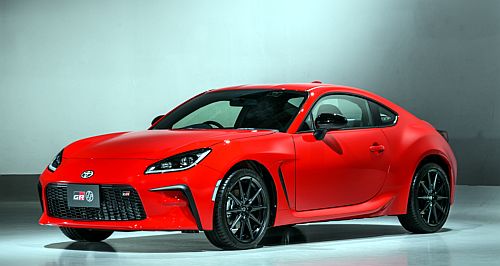Make / Model Search
News - Market Insight - Market Insight 2023Market Insight: Sports cars on the brakesA big sales jump in 2023 fails to mask years of decline in sales of sports cars21 Aug 2023 By NEIL DOWLING HAS the desire to be seen in an SUV meant Australians have fallen out of love with the sports car?
Sales figures show interest in sports cars ebbs and flows with the available product, the available sunshine and lifestyle choices including family sizes. Not forgetting the economy and the confidence of the consumer in its future.
Sports car sales for the year ending July 31 2023 show the sports-car genre is up 45.8 per cent with much of the increase given to the sub-$80,000 bracket.
In particular, the launch of the Gen-2 Toyota 86 is the centre of most of that rise. It found 579 buyers in the first seven months of the year.
In fact, all of the seven entrants in the sub-$80,000 sports-car bracket showed sales increases.
These include the BMW 2 series convertibles and coupes (up 102.5 per cent with 565 sales YTD); Ford Mustang (up 41%, 1352 sales); Mazda MX-5 (up 10.8%, 267 sales); Mini Cabrio (up 29.5%, 180 sales); new entrant, the Nissan Z with 236 sales (replaces the 370Z); Subaru BRZ (up 52.5%, 964 sales); and the Toyota 86, up from its single sale in 2022 that was a remnant of the run-out of the first-gen model.
But it’s not all roses. Total sports-car sales for the seven months of 2023 is 6835 units and while the figure is substantial and the 45.8 per cent bump over the previous corresponding period is encouraging, it’s way short of historic sales.
In the 2022 calendar year, 8745 sports cars found new owners in Australia. That’s down on the 9942 of 2021 but also a long way south of the 27,464 sports cars sold in Australia in 2016.
In that year Australians could choose from 42 sports cars, from a Hyundai Veloster to a Holden Cascada, Honda S2000 to an Alfa Romeo 4C and up to a Honda NSX and beyond.
Now, there’s a choice of 29 cars. Seven years earlier, there were 14 cars priced below $80,000 making relatively budget buying a possibility. Now there are seven cars in that bracket.
The price bracket of $80,000-$200,000 is where most of the choice is, with 14 models offered in 2016 and now 13 available.
Many of the model names available in 2016 in this price bracket remain – in updated guises – today. These include the Mazda MX-5, Audi TT, Ford Mustang, Subaru BRZ and Toyota 86, along with the Porsche 911, Boxster and Cayman.
But some have gone. Dwindling sales and changes to legislation on safety and emissions have dismissed models including the Honda S2000, Peugeot RCZ, Volkswagen The Beetle, Mercedes-Benz SLK, Honda NSX and Renault Megane Sport.
In 2022, the sports-car genre had 8745 sales which equates to 1.5 per cent of the market held by SUVs. In 2016, sports cars represented 6.2 per cent of the SUV market.
So it’s two factors pulling at the sports cars: The rise of SUVs and the decline in the number of models available which has impacted on sales.
But OEMs haven’t totally abandoned the genre. New sports cars are coming, mostly in the $80,000-$200,000 bracket and many as EVs, including the Polestar 6, with some expected to be in the lower price range, such as the MG Cyberster expected in later 2024 at under $100,000.  |
Click to shareMarket Insight articlesResearch Market Insight Motor industry news |









Facebook Twitter Instagram